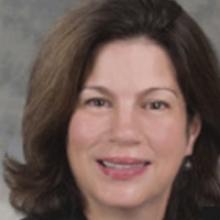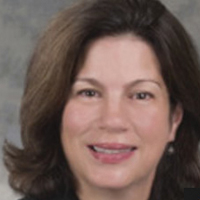User login
A new guideline codeveloped by the American Academy of Neurology and the American Epilepsy Society is intended to aid clinicians as they counsel patients about SUDEP. The practice guideline, published in the April 25 issue of Neurology, provides information about SUDEP incidence in different epilepsy populations, data about risk factors, and recommendations for patient care.
“Our guideline brings clarity to the [SUDEP] discussion, giving health care providers practical information they can use to help people with epilepsy reduce their risk,” said Cynthia Harden, MD, Director of Epilepsy Services for the Mount Sinai Health System in New York City.
A panel of experts searched the MEDLINE and Embase databases from the earliest available article to November 2010. An identical search was performed in April 2015 for articles published since November 2010. The keywords for both searches were “SUDEP” and other traditional medical subheadings for epilepsy (eg, “epilepsy/abnormalities,” “epilepsy/drug effects,” or “epilepsy/therapy”).
After reviewing more than 1,000 abstracts, the panel selected 70 relevant articles. The team then conducted a systematic review and developed conclusions using the modified Grading Recommendations Assessment, Development, and Evaluation process. All recommendations were made by consensus.
Incidence rates were based on 12 Class I studies. The systematic review found that SUDEP affects one in 4,500 children with epilepsy per year. Based on these findings, the experts recommend that clinicians inform parents or guardians about this low risk of SUDEP in children (Level B). In addition, the panel recommends that clinicians inform adult patients about the small risk of SUDEP, which typically affects one in 1,000 adults with epilepsy annually (Level B).
The panel also found that generalized tonic-clonic seizures, which involve convulsions and loss of consciousness, are a major risk factor for SUDEP. In addition, they noted that patients who have three or more of these seizures per year have a 15-fold increased risk of SUDEP. To reduce this risk, clinicians are advised to manage epilepsy therapies actively in these patients to reduce seizures (Level B).
The guideline also recommends nocturnal supervision or other nocturnal precautions for patients who experience frequent generalized tonic-clonic seizures and nocturnal seizures (Level C). Furthermore, the presence of an additional person age 10 or older in the bedroom is associated with a decreased SUDEP risk. If individualized epilepsy and psychosocial circumstances permit, such a person should be present, said the panel. Providing nighttime observation might be overly burdensome or intrusive for some patients, the authors added.
Finally, clinicians are advised to inform patients that seizure freedom, especially freedom from generalized tonic-clonic seizures, is strongly associated with a decreased risk of SUDEP (Level B). The panel also analyzed other SUDEP risk factors (eg, lamotrigine use in women, heart rate variability, and male gender), but too little evidence was available to support recommendations.
“Research to identify preventable risk factors should be supported and encouraged so that future clinical trials will be conducted to reduce SUDEP occurrence,” said Dr. Harden.
—Erica Tricarico
Suggested Reading
Harden C, Tomson T, Gloss D, et al. Practice guideline summary: Sudden unexpected death in epilepsy incidence rates and risk factors: Report of the Guideline Development, Dissemination, and Implementation Subcommittee of the American Academy of Neurology and the American Epilepsy Society. Neurology. 2017;88(17):1674-1680.
A new guideline codeveloped by the American Academy of Neurology and the American Epilepsy Society is intended to aid clinicians as they counsel patients about SUDEP. The practice guideline, published in the April 25 issue of Neurology, provides information about SUDEP incidence in different epilepsy populations, data about risk factors, and recommendations for patient care.
“Our guideline brings clarity to the [SUDEP] discussion, giving health care providers practical information they can use to help people with epilepsy reduce their risk,” said Cynthia Harden, MD, Director of Epilepsy Services for the Mount Sinai Health System in New York City.
A panel of experts searched the MEDLINE and Embase databases from the earliest available article to November 2010. An identical search was performed in April 2015 for articles published since November 2010. The keywords for both searches were “SUDEP” and other traditional medical subheadings for epilepsy (eg, “epilepsy/abnormalities,” “epilepsy/drug effects,” or “epilepsy/therapy”).
After reviewing more than 1,000 abstracts, the panel selected 70 relevant articles. The team then conducted a systematic review and developed conclusions using the modified Grading Recommendations Assessment, Development, and Evaluation process. All recommendations were made by consensus.
Incidence rates were based on 12 Class I studies. The systematic review found that SUDEP affects one in 4,500 children with epilepsy per year. Based on these findings, the experts recommend that clinicians inform parents or guardians about this low risk of SUDEP in children (Level B). In addition, the panel recommends that clinicians inform adult patients about the small risk of SUDEP, which typically affects one in 1,000 adults with epilepsy annually (Level B).
The panel also found that generalized tonic-clonic seizures, which involve convulsions and loss of consciousness, are a major risk factor for SUDEP. In addition, they noted that patients who have three or more of these seizures per year have a 15-fold increased risk of SUDEP. To reduce this risk, clinicians are advised to manage epilepsy therapies actively in these patients to reduce seizures (Level B).
The guideline also recommends nocturnal supervision or other nocturnal precautions for patients who experience frequent generalized tonic-clonic seizures and nocturnal seizures (Level C). Furthermore, the presence of an additional person age 10 or older in the bedroom is associated with a decreased SUDEP risk. If individualized epilepsy and psychosocial circumstances permit, such a person should be present, said the panel. Providing nighttime observation might be overly burdensome or intrusive for some patients, the authors added.
Finally, clinicians are advised to inform patients that seizure freedom, especially freedom from generalized tonic-clonic seizures, is strongly associated with a decreased risk of SUDEP (Level B). The panel also analyzed other SUDEP risk factors (eg, lamotrigine use in women, heart rate variability, and male gender), but too little evidence was available to support recommendations.
“Research to identify preventable risk factors should be supported and encouraged so that future clinical trials will be conducted to reduce SUDEP occurrence,” said Dr. Harden.
—Erica Tricarico
Suggested Reading
Harden C, Tomson T, Gloss D, et al. Practice guideline summary: Sudden unexpected death in epilepsy incidence rates and risk factors: Report of the Guideline Development, Dissemination, and Implementation Subcommittee of the American Academy of Neurology and the American Epilepsy Society. Neurology. 2017;88(17):1674-1680.
A new guideline codeveloped by the American Academy of Neurology and the American Epilepsy Society is intended to aid clinicians as they counsel patients about SUDEP. The practice guideline, published in the April 25 issue of Neurology, provides information about SUDEP incidence in different epilepsy populations, data about risk factors, and recommendations for patient care.
“Our guideline brings clarity to the [SUDEP] discussion, giving health care providers practical information they can use to help people with epilepsy reduce their risk,” said Cynthia Harden, MD, Director of Epilepsy Services for the Mount Sinai Health System in New York City.
A panel of experts searched the MEDLINE and Embase databases from the earliest available article to November 2010. An identical search was performed in April 2015 for articles published since November 2010. The keywords for both searches were “SUDEP” and other traditional medical subheadings for epilepsy (eg, “epilepsy/abnormalities,” “epilepsy/drug effects,” or “epilepsy/therapy”).
After reviewing more than 1,000 abstracts, the panel selected 70 relevant articles. The team then conducted a systematic review and developed conclusions using the modified Grading Recommendations Assessment, Development, and Evaluation process. All recommendations were made by consensus.
Incidence rates were based on 12 Class I studies. The systematic review found that SUDEP affects one in 4,500 children with epilepsy per year. Based on these findings, the experts recommend that clinicians inform parents or guardians about this low risk of SUDEP in children (Level B). In addition, the panel recommends that clinicians inform adult patients about the small risk of SUDEP, which typically affects one in 1,000 adults with epilepsy annually (Level B).
The panel also found that generalized tonic-clonic seizures, which involve convulsions and loss of consciousness, are a major risk factor for SUDEP. In addition, they noted that patients who have three or more of these seizures per year have a 15-fold increased risk of SUDEP. To reduce this risk, clinicians are advised to manage epilepsy therapies actively in these patients to reduce seizures (Level B).
The guideline also recommends nocturnal supervision or other nocturnal precautions for patients who experience frequent generalized tonic-clonic seizures and nocturnal seizures (Level C). Furthermore, the presence of an additional person age 10 or older in the bedroom is associated with a decreased SUDEP risk. If individualized epilepsy and psychosocial circumstances permit, such a person should be present, said the panel. Providing nighttime observation might be overly burdensome or intrusive for some patients, the authors added.
Finally, clinicians are advised to inform patients that seizure freedom, especially freedom from generalized tonic-clonic seizures, is strongly associated with a decreased risk of SUDEP (Level B). The panel also analyzed other SUDEP risk factors (eg, lamotrigine use in women, heart rate variability, and male gender), but too little evidence was available to support recommendations.
“Research to identify preventable risk factors should be supported and encouraged so that future clinical trials will be conducted to reduce SUDEP occurrence,” said Dr. Harden.
—Erica Tricarico
Suggested Reading
Harden C, Tomson T, Gloss D, et al. Practice guideline summary: Sudden unexpected death in epilepsy incidence rates and risk factors: Report of the Guideline Development, Dissemination, and Implementation Subcommittee of the American Academy of Neurology and the American Epilepsy Society. Neurology. 2017;88(17):1674-1680.

